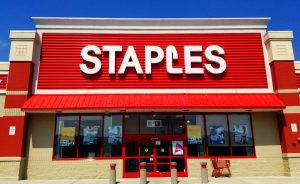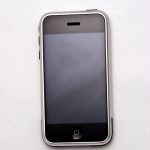1.2 Nature and Types of Selling
Nature of Selling
Selling is dependent on what you sell, how you sell, why you sell and where it is sold. The different products can be consumer products, business products which can be resold or even products of industrial use. Places of sales refers to the location of customers or where the delivery of the products is made (Sujan, 2022).
Table 1.2.1: Nature of Selling Process
Products |
Place for Buying |
Activities |
|---|---|---|
| A shoe | A footwear store | Permitting wear |
| Pack of sugar or Milk powder | Someone’s house or a kiosk at the store | Having a taste |
| A bike | A bike store | Test-riding the bike |
| Ice-cream | An ice-cream store. | Permitting to have a taste |
| A new drug | A doctor’s clinic/ chemist’s store | Requesting recommendation |
| A new heavy machine | The manufacturing company | Presentation and demonstration of the machine |
| Source: Sujan, 2022. | ||
From the above table, you can see, as the product changes, so does the category and along with it the place, nature of selling.
Sales Channels and Environments: Where You Can Put Your Selling Skills to Work
If you had an accident and broke your leg, you would go to an orthopaedic surgeon to have a cast put on it. However, if you had a skin rash you would go to a dermatologist to get relief and clear up the rash. Several doctors may have a role in helping you manage your health, so it makes sense that not all doctors conduct the same procedures. Just as doctors play different roles in the health care field, the same is true for salespeople in the business arena. Different people perform different functions in the selling process.
Is It B2B or B2C?
There are two major distribution channels, or organizations or group of organizations involved in the process of making products and services available to customers in which personal selling is conducted (Weitz et al., 2005). Personal selling involves communication between a customer and a salesperson with the intention of providing information for the customer to make a buying decision. Business-to-business (also referred to as B2B) is when businesses sell products or services to other businesses for consumption by the ultimate consumer.
Example: B2B

Epson sells printers to Staples and makes them to the specifications determined by Staples or Levis sells to the Bay or other big box stores certain types of their jeans specific to that big box store (you can only get those product lines in those stores). Other examples of B2B selling include parts or ingredients, such as when Intel sells computer chips to Toshiba to manufacture laptop computers or when a fabric company sells cotton fabric to Gap to make their T-shirts. Many B2B companies, such as Intel, have branded their products so that consumers quickly identify these products even though the products are only sold to businesses.
On the other hand, the transactions in which you as a consumer participate are business-to-consumer (also called B2C), which means that a company is selling a product or service directly to you as the ultimate consumer.
Example: B2C
There are some important differences between B2B and B2C selling. B2B selling engages with fewer customers (which makes sense because there are fewer businesses than there are consumers). At the same time, however, B2B selling involves much larger purchases. Companies purchase parts, ingredients, or supplies to service many consumers, while consumers only purchase a product or service for their own consumption or that of their family and friends. Since B2B purchases are larger in value than consumer purchases, the selling process is usually longer. This is because of the size of the purchase, and in many companies, there are multiple people involved in the purchasing decision.
Table 1.2.2: Business-to-Business versus Business-to-Consumer
Business to Business (B2B) |
Business to Consumer (B2C) |
|---|---|
| Usually a larger geographical area | Usually a more compact sales area (unless strictly online sales) |
| Dealing with multiple buying organizations and buyers | Dealing directly with purchaser or user |
| Need to understand the customer’s business and application to the product or service | Usually easier to understand how or why the customer buys product |
| Likely to have a longer sales lead time or sale cycle | Shorter lead time or even immediate decisions |
| Might have to sell to a buying team | Usually sell directly to one purchaser or user |
| Relatively large purchase | Relatively small purchase size or amount (single or family use) |
Types of B2B and B2C Selling
When you go to McDonald’s and a salesperson asks you if you want fries with your order, there is not much involved on the part of the salesperson. In fact, you may not have even considered the person who took your order to be a salesperson. This selling situation matches the needs of the buyer efficiently with the operation, but it does not require a personal relationship or detailed product information to consummate the sale (Manning et al., 2010). The product or service is of low dollar value and no additional contact is required for the sale. This is called transactional selling, and it occurs in B2C situations like this one, as well as B2B situations (Futrell, 2008).
On the other hand, consultative selling, also called relationship selling, takes place when there is a long-term or ongoing relationship between the customer and the seller, and the salesperson takes on the task of truly understanding the customers’ needs and providing solutions to meet those needs. In this type of selling situation, adaptive selling takes place. This occurs when a salesperson changes selling behaviour during a customer call to improve the exchange or outcome (Manning et al., 2010). A consultant salesperson brings a personal connection to solving problems for their customers through active listening (Quain, 2018). Consultative selling takes place in both B2B and B2C environments.
If you were working with a financial advisor to develop a retirement plan, the advisor would be consulting you on the best ways to save and how to best invest your money. They would adapt to your needs based on your feedback. If you told them, “I don’t want to be in such high-risk investments,” this would prompt them to adapt their selling behaviour to better match your needs. In some cases, the selling relationship goes beyond consultative selling and establishes a true method for mutual benefit; this is called a strategic alliance. In this situation, sellers and buyers work together, to develop opportunities and points of difference that would not exist without the relationship (Weitz et al., 2010). This type of relationship is usually found in B2B environments because a strategic alliance typically involves two companies that have something to gain by each taking an appropriate risk.
Example: Strategic Alliance

Before introducing the iPhone, Apple contracted AT&T to be the exclusive service provider. Each company had something to contribute to the relationship, and each one had something to gain. In this case, AT&T pays Apple for each new customer it receives. Apple increases its revenues, and AT&T gains new customers. Both companies had to invest in research and development to make the relationship happen. Both companies “had skin in the game,” so both worked hard to ensure success through public relations, advertising, personal selling, and follow-up customer service. As a result, the relationship has been extremely successful for both parties, as a strategic alliance should be (Cauley, 2008).
It is important to note that not all strategic alliances are exclusive deals like the iPhone with AT&T, which eventually expanded and became non-exclusive. In terms of customer satisfaction with sales, it varies by industry. Looking at Customer Satisfaction Benchmarks from 2019, Government had the lowest satisfaction scores (66.7%) by consumers! (American Customer Satisfaction Index, 2023) Is it safe to say we do not form a relationship with our government service providers?
Is It Inside or Outside Sales? Focus on the relationship.
What is the difference between the salesperson with whom you live-chat on BestBuy.com and the person you talk to in the store? Although both are salespeople for Best Buy, the person with whom you conducted live chat is considered an inside salesperson; the salesperson you spoke with in the store is considered an outside salesperson. Inside salespeople do not meet face-to-face with customers. Outside salespeople connect with customers in different ways, including in-person meetings.
For many B2B and B2C companies, the outside salespeople are generally the primary drivers of sales and costs of sales, since the outside salespeople travel to meet in person with customers to learn more about their needs, build relationships, and provide consultation and solutions. Inside salespeople usually perform more tactical selling functions such as providing product information (as in the Best Buy example above), following up on details, and keeping the customer informed of basic information.
Companies have traditionally used inside salespeople because they are part of a strategy that helps keep selling costs low. Today, many companies are converting outside salespeople to inside salespeople. Advances in technology are blurring the lines between inside and outside salespeople by providing platforms for inside salespeople to be more collaborative and consultative with tools such as video conferences, Webinars, wikis, and more. As more companies leverage technology and think differently about customer relationships, the concept of inside and outside salespeople will evolve around the most mutually efficient and beneficial customer relationships, rather than the physical location of the salespeople.
Putting Adaptive Selling to Work
Adaptive selling - a situation in which the salesperson adapts or customizes her selling style based on the behaviour of the customer occurs when a salesperson adapts, changes, and customizes her selling style based on the situation and the behaviour of the customer (Weitz et al., 2010). Adaptive selling allows you to truly listen, understand the customer’s needs, and then adapt your conversation and presentation accordingly. On the other hand, if you were giving a selling presentation that is exactly the same for every customer, you wouldn’t be able to learn what the customer thinks is important. For example, if you were selling landscaping to a customer, you wouldn’t know if the customer wanted the landscaping to provide privacy or create a view. The only way you would find out is by listening, asking questions, and adapting your recommendations and presentation accordingly. Adaptive selling is much easier to do when you establish a relationship with the customer.
Adaptive selling takes place in many situations in business and in life. It is the selling skill that allows you to adapt your communications to a person or situation. Chances are you already use adaptive selling in your everyday life, but you may not realize it. Do you approach your parents differently than your friends? Do you speak to a professor differently than you do to your roommate? These are examples of adaptive selling.
It’s also likely that you interact with each of your friends differently. Do you have a friend that needs tons of information to make a decision, while another friend makes a decision in an instant? Do you know people who want to talk about their decisions before and after they make them and those who just decide and don’t say a word? Understanding diversity, or the different ways people behave, is the cornerstone of adaptive selling.
"2.2. Sales Channels and Environments: Where You Can Put Your Selling Skills to Work" from The Power of Selling is licensed under a Creative Commons Attribution-NonCommercial-ShareAlike 4.0 International License, except where otherwise noted.
"3.2 Putting Adaptive Selling to Work" from Selling For Success 2e by NSCC and Saylor is licensed under a Creative Commons Attribution-NonCommercial-ShareAlike 4.0 International License, except where otherwise noted.

